Endometrial scratch injury in infertile women undergoing in vitro fertilization cycles: a systematic review and meta-analysis
- PMID: 37401039
- PMCID: PMC10328184
- DOI: 10.1177/03000605231175365
Endometrial scratch injury in infertile women undergoing in vitro fertilization cycles: a systematic review and meta-analysis
Abstract
Objective: This study aimed to evaluate the effect of endometrial scratch injury (ESI) in infertile women undergoing in vitro fertilization (IVF).
Methods: We screened MEDLINE, CENTRAL, EMBASE, Web of Science, and the Cochrane Central Register from inception to April 2023 using keywords related to endometrial scratch, implantation, infertility, and IVF. We included 41 randomized, controlled trials of ESI in IVF cycles (9084 women). The primary outcomes were the clinical pregnancy, ongoing pregnancy, and live birth rates.
Results: The clinical pregnancy rate was reported in all 41 studies. The odds ratio (OR) for the clinical pregnancy rate had an effect estimate of 1.34 with a 95% confidence interval (CI) of 1.14 to 1.58. The live birth rate was reported in 32 studies with 8129 participants. The OR for the live birth rate had an effect estimate of 1.30 with a 95% CI of 1.06 to 1.60. The multiple pregnancy rate was reported in 21 studies with 5736 participants. The OR for the multiple pregnancy rate had an effect estimate of 1.35 with a 95% CI of 1.07 to 1.71.
Conclusion: ESI increases the clinical pregnancy, ongoing pregnancy, live birth, multiple pregnancy, and implantation rates in women undergoing IVF cycles.
Keywords: Clinical pregnancy rate; endometrial injury; endometrial scratch; implantation; in vitro fertilization; infertility.
Conflict of interest statement
The authors declare that there is no conflict of interest.
Figures
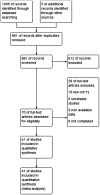
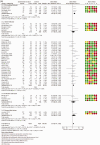



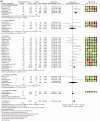



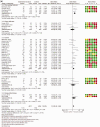



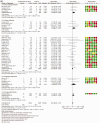










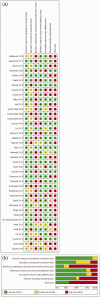
Similar articles
-
Endometrial injury in women undergoing in vitro fertilisation (IVF).Cochrane Database Syst Rev. 2021 Jun 10;6(6):CD009517. doi: 10.1002/14651858.CD009517.pub4. Cochrane Database Syst Rev. 2021. PMID: 34110001 Free PMC article.
-
Endometrial scratching in women with implantation failure after a first IVF/ICSI cycle; does it lead to a higher live birth rate? The SCRaTCH study: a randomized controlled trial (NTR 5342).BMC Womens Health. 2017 Jul 21;17(1):47. doi: 10.1186/s12905-017-0378-y. BMC Womens Health. 2017. PMID: 28732531 Free PMC article. Clinical Trial.
-
The impact of intentional endometrial injury on reproductive outcomes: a systematic review and meta-analysis.Hum Reprod Update. 2019 Jan 1;25(1):95-113. doi: 10.1093/humupd/dmy034. Hum Reprod Update. 2019. PMID: 30388238
-
The effect of endometrial injury on ongoing pregnancy rate in unselected subfertile women undergoing in vitro fertilization: a randomized controlled trial.Hum Reprod. 2014 Nov;29(11):2474-81. doi: 10.1093/humrep/deu213. Epub 2014 Sep 8. Hum Reprod. 2014. PMID: 25205759 Clinical Trial.
-
Endometrial injection of embryo culture supernatant for subfertile women in assisted reproduction.Cochrane Database Syst Rev. 2020 Aug 14;8(8):CD013063. doi: 10.1002/14651858.CD013063.pub2. Cochrane Database Syst Rev. 2020. PMID: 32797689 Free PMC article.
Cited by
-
Hysteroscopic Endometrial Fundal Incision versus Hysteroscopy Only in Oocyte Recipients: A Randomized Controlled Trial Assessing The Reproductive Outcomes.Int J Fertil Steril. 2024 Jul 13;18(Suppl 1):3-9. doi: 10.22074/ijfs.2024.2009369.1523. Int J Fertil Steril. 2024. PMID: 39033364 Free PMC article.
-
Interventions for recurrent embryo implantation failure: An umbrella review.Int J Gynaecol Obstet. 2025 May;169(2):539-556. doi: 10.1002/ijgo.16066. Epub 2024 Dec 5. Int J Gynaecol Obstet. 2025. PMID: 39636199 Free PMC article.
-
Endometrial biopsy performed before the first in vitro fertilization does not impact the early pregnancy rate.Sci Rep. 2024 Jan 11;14(1):1153. doi: 10.1038/s41598-023-50715-y. Sci Rep. 2024. PMID: 38212636 Free PMC article. Clinical Trial.
References
-
- Taylor HS, Pal L.Clinical gynecologic endocrinology and infertility. In: Taylor HS, Pal L. (eds). Speroff’s Clinical gynecologic endocrinology and infertility. 9th ed. Lippincott Williams & Wilkins – Wolters Kluwer, 2020, pp. 431–484.
-
- Toftager M, Bogstad J, Løssl K, et al.. Cumulative live birth rates after one ART cycle including all subsequent frozen-thaw cycles in 1050 women: secondary outcome of an RCT comparing GnRH-antagonist and GnRH-agonist protocols. Hum Reprod 2017; 32: 556–567. - PubMed
-
- El-Toukhy T, Sunkara S, Khalaf Y.Local endometrial injury and IVF outcome: a systematic review and meta-analysis. Reprod Biomed Online 2012; 25: 345–354. - PubMed
-
- Maged AM, Rashwan H, AbdelAziz S, et al.. Randomized controlled trial of the effect of endometrial injury on implantation and clinical pregnancy rates during the first ICSI cycle. Int J Gynaecol Obstet 2018; 140: 211–216. - PubMed
Publication types
MeSH terms
LinkOut - more resources
Full Text Sources
Medical
Miscellaneous

